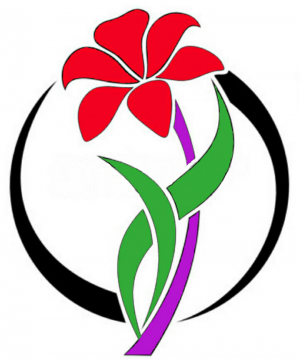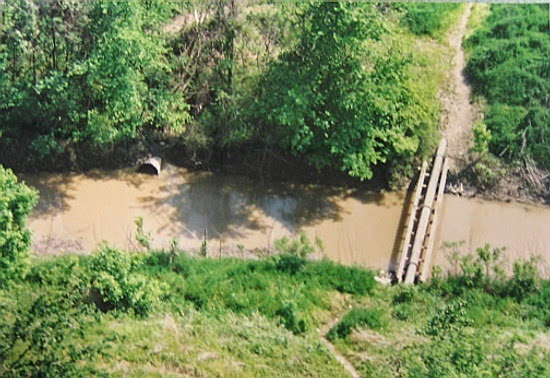Where the Gridiron and Gentrification Intersect
Atlanta Falcons owner Arthur Blank says the projected $1.6 billion Mercedes-Benz Stadium is going to rejuvenate and drive the economy of downtown Atlanta for decades to come. But in the redevelopment process, what will become of the blighted communities surrounding the new NFL digs?
 |
A NEW STADIUM AND AN OLD PROBLEM: Set to open next year, the lavish Mercedes-Benz Stadium will anchor a freshly renovated and redeveloped downtown Atlanta. With the new economic developments, however, comes renewed concerns about displacement of residents living in the impoverished, high-crime communities adjacent to where the new home of the Falcons will stand. (Photo Credit: James Swift.)
@UNJournalism
The way Arthur Blank describes the new home of the Atlanta Falcons, one can’t help but be reminded of the grandiloquent prose of Samuel Taylor Coleridge. Of course, Blank’s pinwheeled Kubla Khan differs quite a bit from the “stately pleasure dome” envisioned by the acclaimed, opium-addicted British poet. Instead of lauding “five miles of fertile ground with walls and towers were girdled round,” The Home Depot co-founder extols the 7,000 miles of fiber technology embedded inside the hulking Mercedes-Benz Stadium - a total, he reminded attendees at an Aug. 17 press briefing in Atlanta, that exceeds the amount inside Levi's Stadium in Santa Clara, Calif. more than 17 times over.
However, Blank said the new stadium - set for completion in June 2017 - is going to be much more than a place to watch pro football and pro soccer games (pending you can afford the $10,ooo-plus personal seat licenses, anyway.) Indeed, he said he envisions the finished product representing both a new centralized economic and cultural hub for the entire city.
“We've got 2 million square feet and we've got great arcades, great plazas, great areas we can use in terms of greenspace to really create a year-round, 365-day gathering place for all of us - our families, for our young folks, for our aging folks," he said. "We have an incredible building, an incredible facility that represents the best of the public-private partnership. That's important to the National Football League, that's important to my partners, the 31 other owners, to see a city, community and state step up the way we have here.”
Blank said that multi-use component - complete with plans for expanded bike lanes and the resurrection of the soon-to-be-imploded Georgia Dome’s ruins as a “green parking lot” - was one of the key reasons Atlanta was awarded Super Bowl LIII in 2019. “It was important to them that everything is walkable,” he said. “We’ve got over 10,000 rooms within a mile … actually, less than a mile, to the stadium.”
With 1,500 men and women working double and triple shifts from 6 a.m. to 2 or 3 o’clock in the morning (Blank was careful to explain that he’s not referring to individual people swinging 20-hour workdays,) considerable progress on the $1.6 billion stadium - of which $700 million is expected to be funded through public subsidies - is anticipated this fall. While the Falcons wrap up their final season at the Georgia Dome, the signature “pinwheel” retractable roof is scheduled to be installed by year’s end. By the time Matt Ryan and company actually take the field for regular season play, the first seats should be drilled into Mercedes-Benz Stadium, which Blank said he expects to be the first sports facility in the country to receive LEED platinum certification.
While Blank’s vision of westside economic development largely focuses on the touristy trappings of Atlanta - namely, its museums dedicated to preserving the history of the civil rights movement, college football and Coca-Cola products - and a multitude of Mercedes-Benz-centric revenue generators (among other financial drivers, he said he expects the building to be used for “hundreds” of weddings and bar mitzvahs annually), the proverbial elephant in the room remains the severely blighted communities adjacent to the multi-billion dollar entertainment nexus. Just yards away from where Atlanta Falcons fans will be tailgating next season is a portal to an entirely different world - the notorious “Bluff,” a crime-ravaged, extremely impoverished collection of neighborhoods that is oft-considered one of the largest markets for heroin in the entire country.
Alas, Blank said economic development on the westside will not play out like it did for the Braves, where Turner Field failed to stimulate much economic development in the Mechanicsville neighborhood.
“Probably the most important thing is that we’ve had a collaborative vision on this well before we designed the stadium. It goes back seven or eight years,” he said. “Our family foundation and associates, we really felt this wasn’t just about building a stadium, it was about building something that will be important to Atlanta, important to the region and important to the state. And being in an area that can really make a difference in people’s lives.”
Primarily consisting of English Avenue and Vine City, fears of ensuing gentrification in the infamous Bluff have increased in the wake of the city’s post-recession development bonanza. With Mercedes-Benz Stadium coming in next year, many community members fear displacement isn’t just likely, it’s practically inevitable.
The stadium and its refurbished, renewed and revitalized environs, he said, could prove a “catalyst” that helps Vine City and English Avenue surmount the many, many challenges that have been plaguing the neighborhoods for years. The Falcons' new stadium, he continued, isn’t just a three-year project - it’s “a 20-year commitment” to the entire community.
“Our family is dedicated to that period of time and the partners that we are working with, the companies that have signed on and will be signing on, our founding partners and official partners, our naming rights partners, many of the great partners in the community like [The Home Depot] have committed to making a difference in people’s lives as well,” he said. “I think as time goes on - it won’t take 20 or 30 years, but it will take some number of years - you’ll see continued progress, just the way we’ve seen that in other areas of our city that have similar kinds of conditions and have a similar kind of history.”
Despite the Bluff's rough reputation, Blank said signs of improvement are already visible. “You walk those areas today and you will see significant changes,” he said. “We spent enough time in these communities now working to hear the pulse of the folks living [there] as saying ‘it’s not perfect, it’s better. It’s absolutely better - the blighted homes, security issues, public education, a whole variety of things, job training, job placement in a variety of industries.’”
That’s where Frank Fernandez comes in. Formerly the executive director of Austin, Texas-based nonprofit Green Doors, he was tabbed by the Arthur M. Blank Family Foundation almost three years ago to lead the Westside Neighborhood Prosperity Fund, an initiative homing in on “the transformational revitalization and redevelopment” of the communities abutting the new stadium.
“Frank virtually has met with every single person that’s living in those areas and we spent a great deal of time, three years before we began the process, in community meetings,” Blank said.
The intent of those meetings, Blank continued, was to pin down the needs of community members without imposing a solution upon them. “At the end of the day, they feel like they have to own the solutions, they feel like they have to own the opportunities to make improvements in their lives," he said.
Concerns about displacement, however, still loom large, Fernandez said.
“We have just started a community retention planning process to really try to address that, working with the neighborhood associations,” he said. “We’re really looking at three buckets: of the homeowners, how can we help them stay there, the renters as well as the small business owners.”
The organization best suited to address the gentrification in the area, Blank said, is the Westside Future Fund, a civic and economic development program spearheaded by the Arthur M. Blank Family Foundation and Invest Atlanta. "A collaboration of many corporations and nonprofits and leadership from within the community are in the final stage of developing, with input from the community, a master plan for all these areas," Blank said. "That master plan would be used as a funding mechanism to go to CEOs and go to leadership at a variety of institutions. Part of that plan will be preservation of the areas you're talking about."
An area steeped in civil rights history, Fernandez said preservation efforts have been discussed, but few have stepped up to the plate to offer anything concrete.
“Just on Sunset Avenue alone, you have three civil rights icons who lived there within 30 yards,” he said. “There are a lot of people who have thought about it and started to work on it, but there hasn’t been any one group that has taken the bull by the horns.”
Finding partners for displacement-deterring initiatives shouldn’t be too difficult, Fernandez added. The thornier issue is finding a way to get all the interested parties working on the same page.
“There’s a lot of us who want to help, but I don’t think anyone is uniquely positioned,” he said. “There are a few groups - like say, the AUC schools - that are interested, but how can we connect them to make it happen?”
Uncommon Journalism, 2016.
|



Comments
Post a Comment